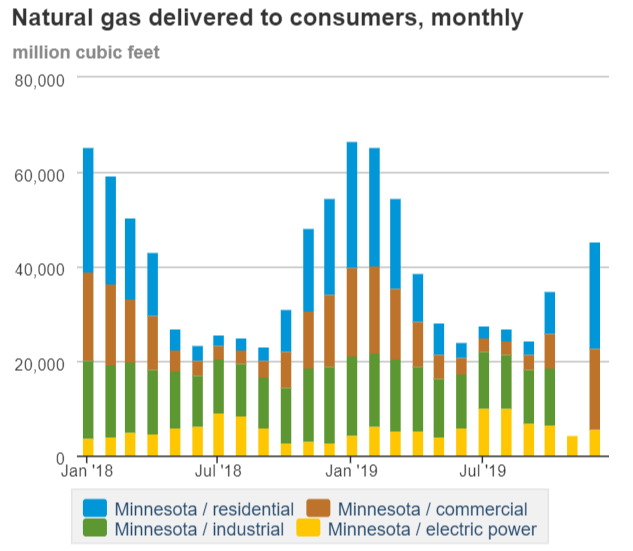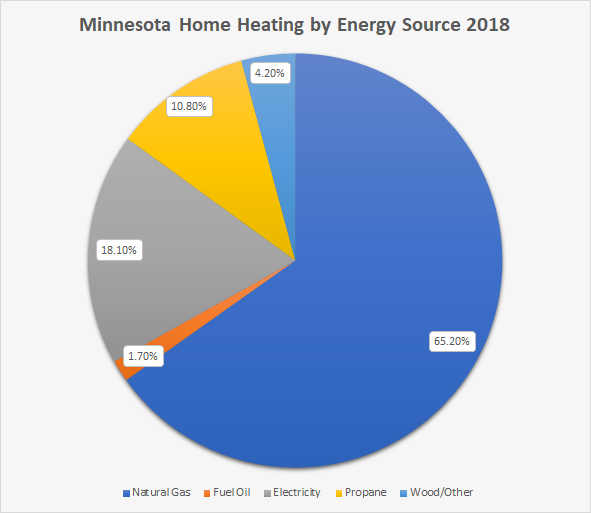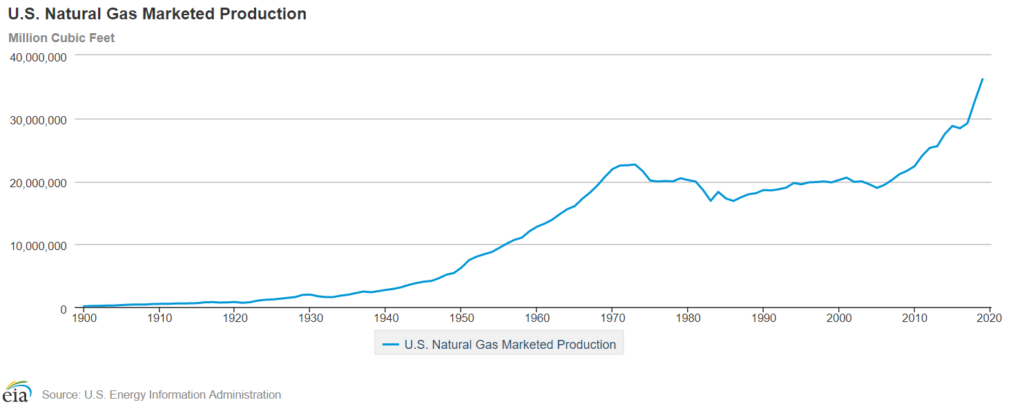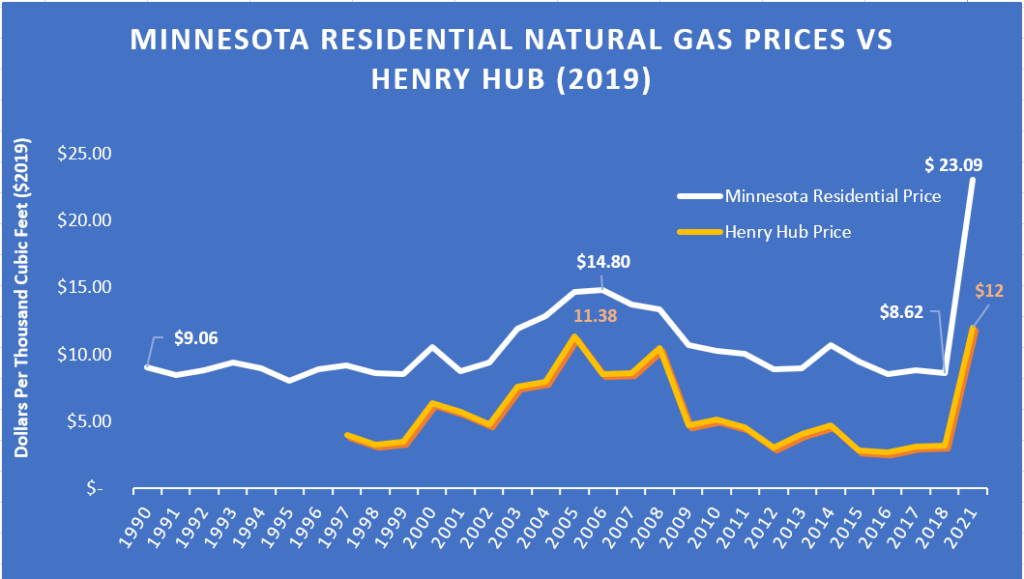What Would a Joe Biden Fracking Ban Look Like? Part Four: Holy $1,325 Heating Bill Increase, Batman!
During the Democrat debate between Vermont Senator Bernie Sanders and former Vice-President Joe Biden on Sunday, March 15, 2020, Vice-President Biden stated that he would allow “no new fracking,” but such a policy would cause the heating bill for the average Minnesota household to increase by about $1,330 every year because fracking is crucial for natural gas production. This article is the fourth installment in this series.
According to the U.S. Chamber of Commerce study, “What if Hydraulic Fracturing Was Banned?,” a fracking ban would cause natural gas prices to increase from $1.80 per thousand cubic feet (MCF) today, to $12 per MCF, which is 6.66 times higher than its current price. This would hit Minnesota especially hard because natural gas is the second-largest source of energy used in Minnesota, accounting for 27 percent of the total energy used in 2017.
Uses of Natural Gas in Minnesota
Natural gas is increasingly being used for electricity generation in Minnesota, but it’s most important use is heating our homes and businesses. It is also a source of energy needed for our industrial facilities, as you can see in the graph from the Energy Information Administration (EIA) below. Our heavy reliance on natural gas means a fracking ban would dramatically increase the cost of natural gas, harming all Minnesotans.

Families would be hit especially hard because about 66 percent of Minnesota homes use natural gas as their primary heating source, compared to 18 percent for electricity, and 10 percent for propane, as you can see in the pie chart below that was created using data from EIA. This means about 1.5 million Minnesota families would have to pay more to heat their homes as a result of a fracking ban.

To understand how much more each family would be forced to pay to keep warm, it helps to take a step back to understand the supply and demand dynamics of the natural gas in the United States over the last three decades. This is important because many people don’t realize how quickly or how profoundly fracking has changed the world of natural gas.
The graph from EIA below shows historical natural gas production from 1900 through 2019. Natural gas production had declined after peaking in the early 1970’s, rising slightly in the early 2000’s before hitting a low point in 2005. However, in 2008, the United States started producing meaningful quantities of natural gas from fracking, and by 2011, the United States had increased natural gas production 27 percent, surpassing Russia as the largest producer of natural gas in the world.

Surging natural gas production sent prices plummeting. The graph below shows natural gas prices for Minnesota residential customers and the price at Henry Hub, which is the pricing point for natural gas futures on the New York Mercantile Exchange, adjusted to be shown in 2019 dollars (Henry Hub prices prior to 1997 were not available). Prices peaked in the mid-2000’s, but plummeted after 2008. Thanks to fracking, they’ve have stayed low ever since.
However, this would change if fracking were banned. Historically speaking, the price paid for natural gas by Minnesota residential customers was 1.92 times higher than the Henry Hub price from 1997 through 2018. If we assume this trend holds during a fracking ban, it would increase the cost of natural gas at the Henry Hub to $12 per MCF and the cause the Minnesota price to spike to $23 per MCF, as you can see in the graph below.

This would have profound implications for all Minnesota families that use natural gas to keep warm in winter. The graph below shows the average Minnesota family saved $593 in 2018 compared to 2005 because of much lower natural gas prices. This is a huge win for all Minnesota families, but it is most important for low-income households, who are harmed the most by high natural gas prices for home heating.

However, if fracking were banned, these savings would completely evaporate. Using the assumptions for natural gas prices above, the average Minnesota household would see their heating bill increase from the $790 they paid in 2018 to $2,115 in a hypothetical 2021 where fracking were banned, nearly tripling the cost of home heating.
Politicians who talk about banning fracking may think it makes for good soundbites, but in the real world, it would have enormously bad consequences for all Minnesotans. Furthermore, the people who would be hurt the most by a fracking ban are low-income households who will have to pay a far greater share of their household income just to keep from freezing.
In fact, someone making $15 per hour would need to work an extra 88 tax-free hours just to afford the increase in their heating bill. In this way, you can think of a fracking ban as an artificial cap on production, and consumers are left paying a premium, or tax, for the product. For those making $15 per hour, a fracking ban would effectively act as a two week tax on their annual income.
Politicians and special interest groups like to pretend that policies like the Green New Deal will be a boost to the American economy, but in the real world, the Green New Deal would look more like a Green Leap Forward.